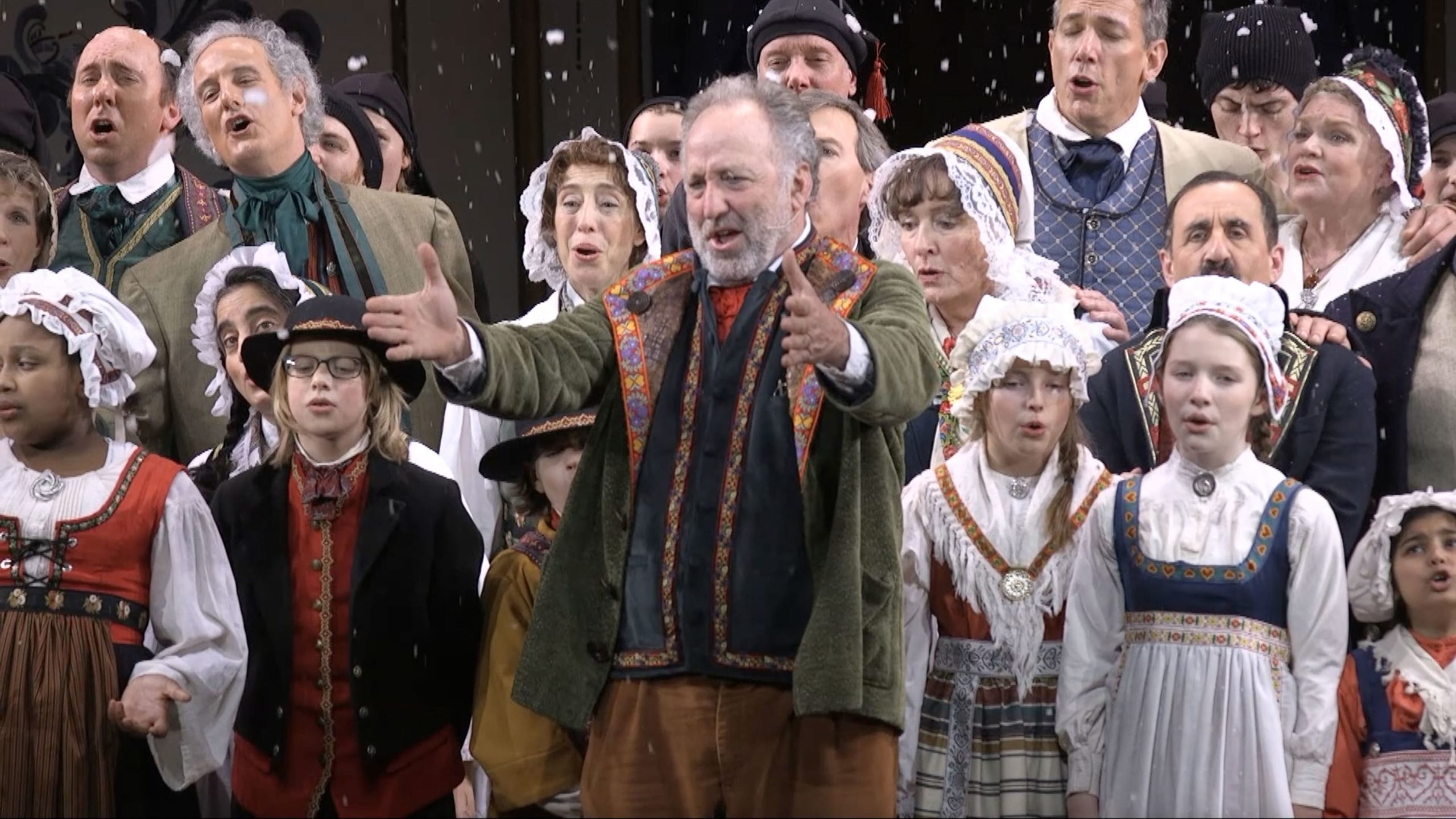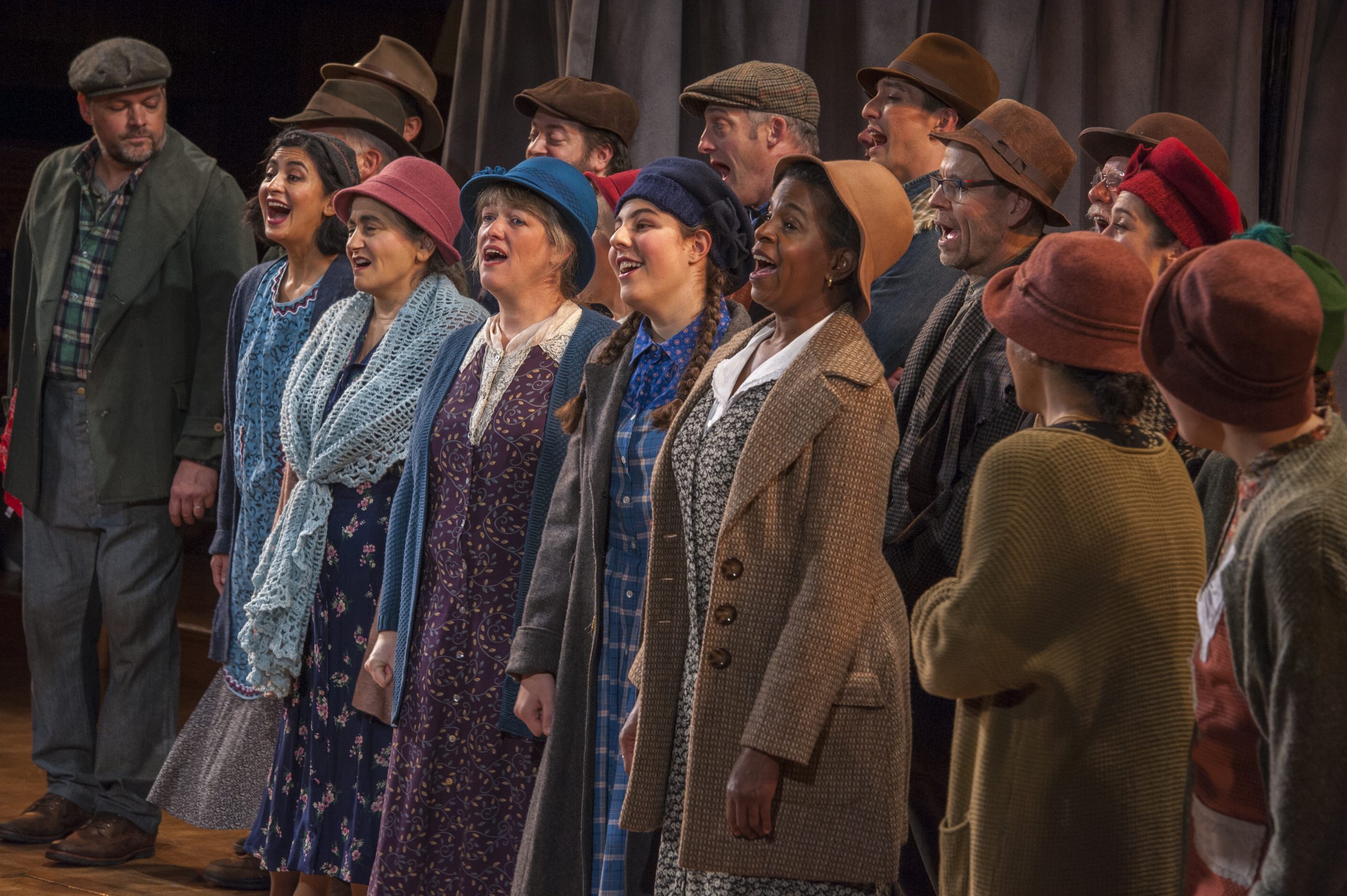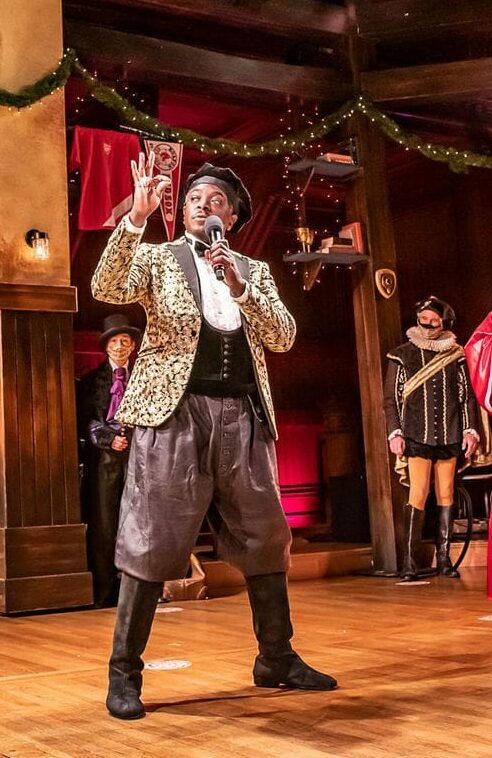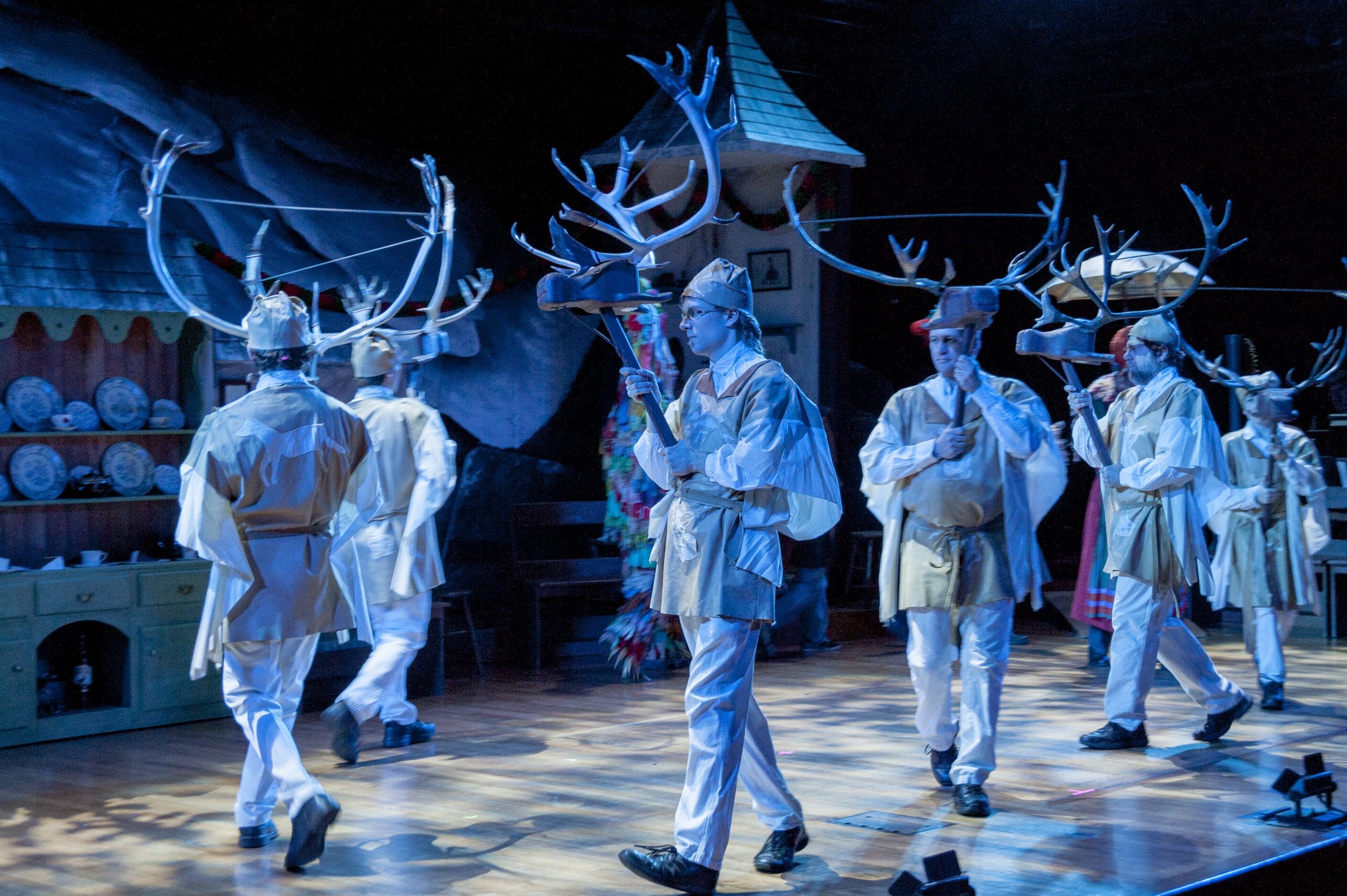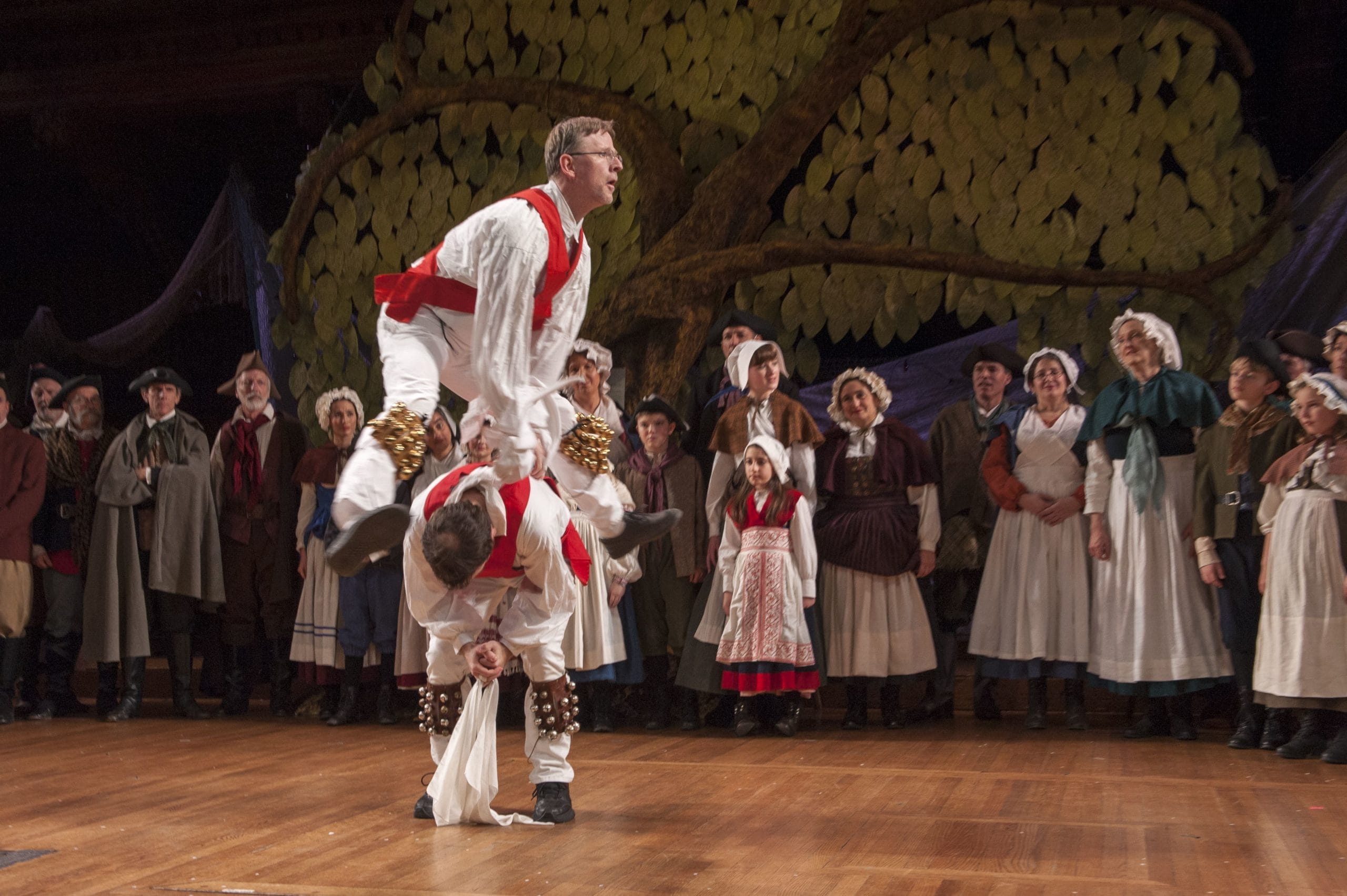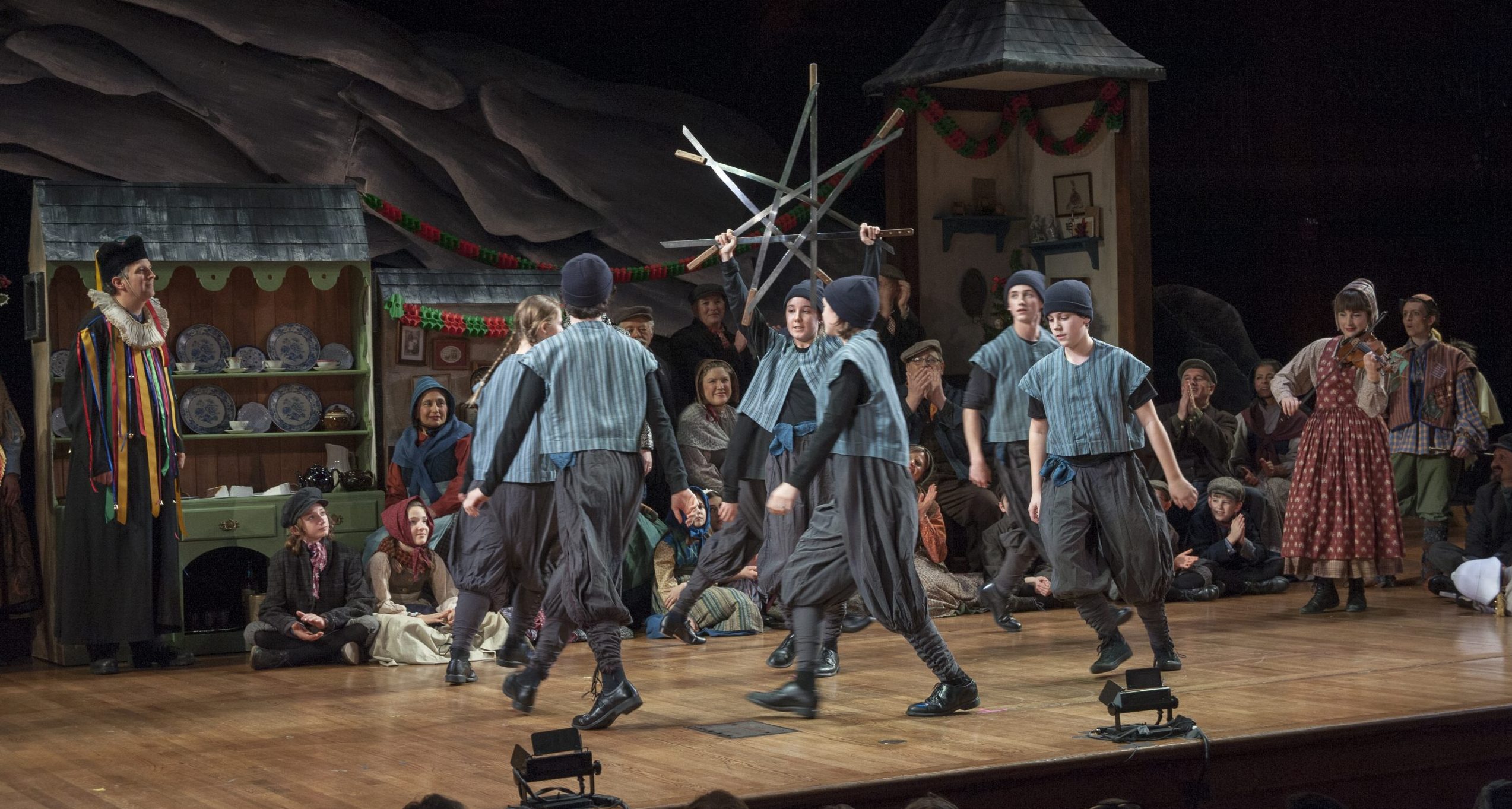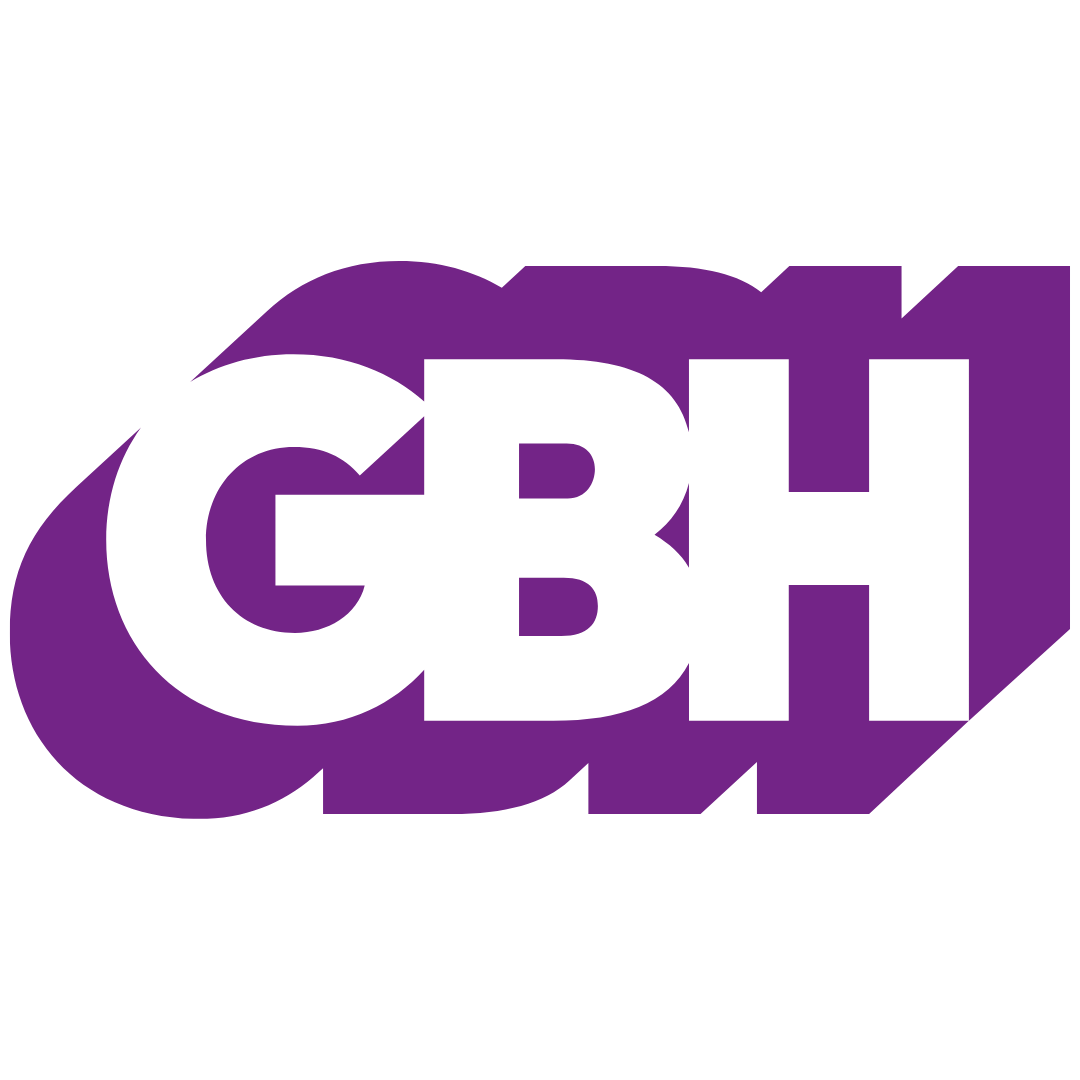Sword dancing and Morris dancing is a beloved part of The Christmas Revels, tracing traditions back to dances performed throughout English villages
Most of the sword dancing in Revels comes from two English traditions – hilt and point longsword dancing and rapper sword dance. The longsword dances are associated with specific villages and towns in England and feature weaving figures and patterns in which each of the six or eight dancers holds the hilt of their own sword and the (blunted) point of their neighbor’s. At the end of the dance, the swords are woven into a “lock” or “nut” shaped like a star or triangle.
In some traditions (including performances of The Christmas Revels) the lock is placed over the head of a “victim.” With a quick withdrawal of their swords, the dancers cause the victim to fall down “dead.” This act cues the essential business of resurrection.
The folk play, or mummers play, is about the abiding mystery of life and death, particularly the death of the old year and the end of warmth and plentiful food. This leads to the birth of the new year, performed around the shortest day of the year to bring good luck at a crucial turning point of the calendar. Fragments of the mummers play remain in some sword dance traditions.
This video of North British sword dancers features a performance of their version of the traditional White Boys of Manx longsword dance.
Rapper sword dance is a more recent tradition coming from the mining villages and towns of the North East of England. The swords are short and flexible with handles at both ends, rather like the scrapers used to groom horses, or perhaps pit ponies. Rapper sword dance is fast and tight, featuring rhythmic “stepping.” The dance is accompanied by music from a concertina, fiddle, or pipe.
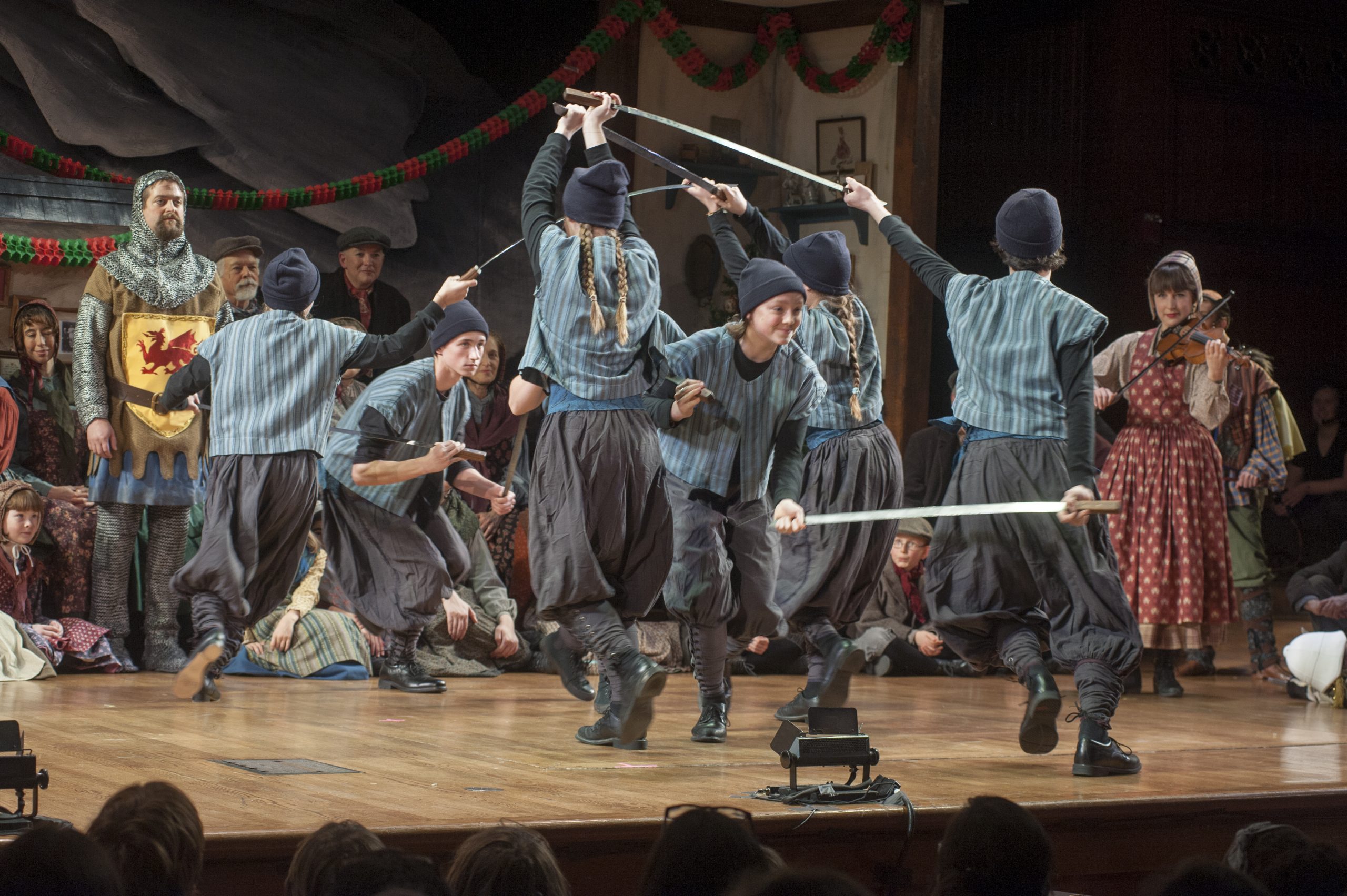
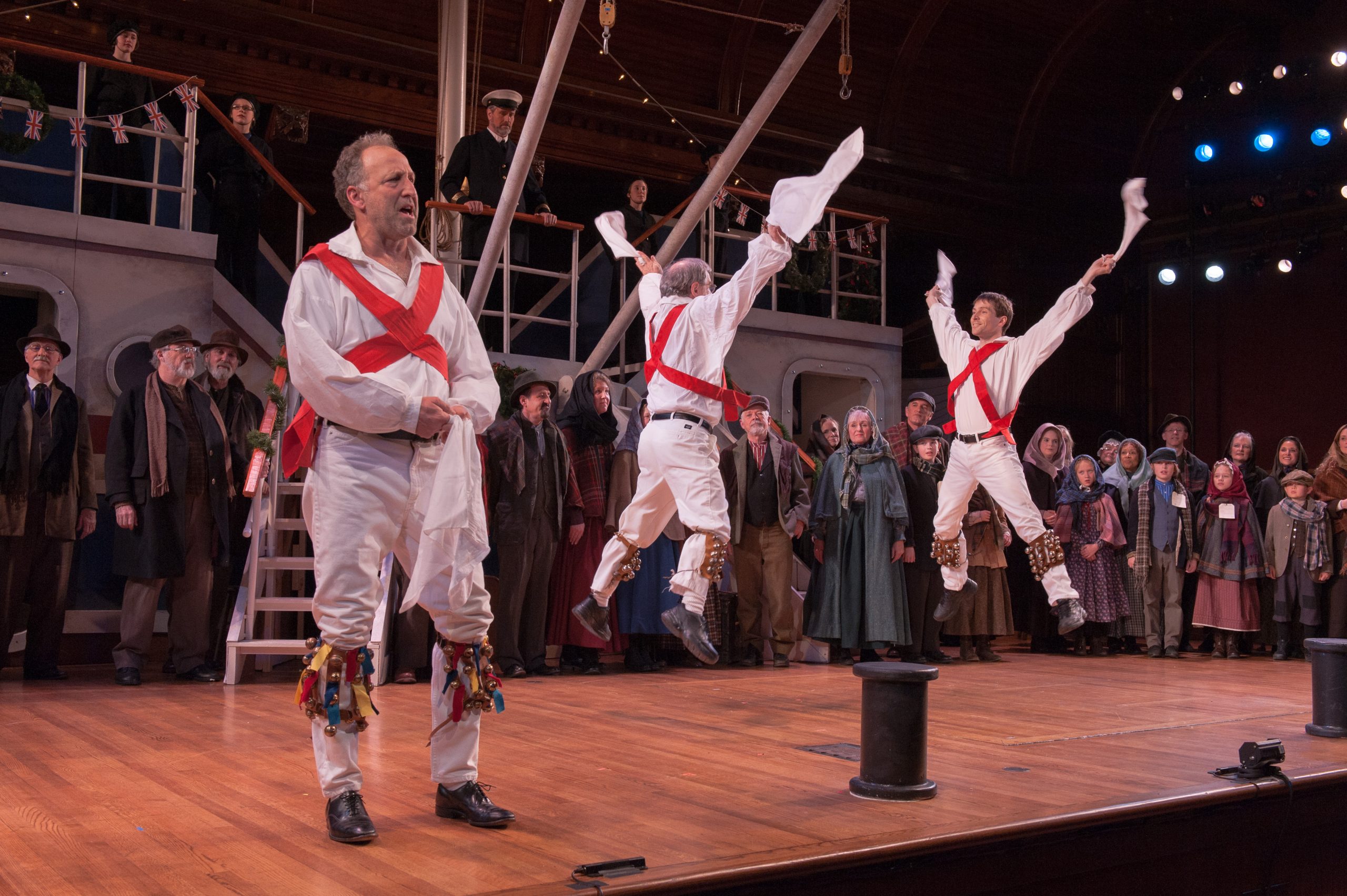
Morris dancing is a festive dance form, where dancers sport bells and ribbons. Morris dancing can be traced back to the mid-15th century and has long been associated with towns and villages in the south Midlands of England. The origin of Morris dancing may lie on the European continent, and until the mid-16th century, it seems to have been mostly used as a form of entertainment at court or among the gentry. By Shakespeare’s time, Morris dancing had become a highly popular form of team dancing at events such as local May Day observances, church ales, Whitsuntide celebrations, and field blessings. Morris dancing was often pub entertainment and an opportunity for the dancers to earn some extra “tin.”
Morris dancing was largely suppressed under the Puritans during the 17th century. After the restoration of the King in 1660, however, Morris dancing experienced a revival. In towns and villages throughout the southwest region of England, men formed teams of six dancers, plus a fool, hobby horse, and someone to collect the money. They found a musician for their team and performed a set of dances unique to their village during the spring and summer. It was a colorful, often rowdy kind of street theater, costumed and spirited, usually emphasizing fertility and the good luck of the morris.
Revived in the late 19th century after a period of decline, Morris dancing has once again become a widespread part of English culture and has spread to many other countries, including the United States, Canada, Australia, and even Hong Kong. Historically danced mostly by men, Morris is now danced by men’s teams, women’s teams, and mixed teams. To this day, the dances still come out of many long-standing village traditions, from towns like Bledington, Headington, Bampton, Adderbury, Fieldtown, Ascot-Under-Wychwood, Sherborne, and dozens more. The Morris team in this video hails from Oxford
& Revels Rituals
Our Community
Revels is a joyous sum of its many parts. We invite you to explore all the ways you can get involved with Revels, such as participating in our performances, volunteering, making a donation, or simply joining us in song as a member of the audience.
Our generous sponsors make it possible for Revels to produce world-class performances and educational programs for our audiences.
Let us know how we can work together to promote music, dance, and community!

